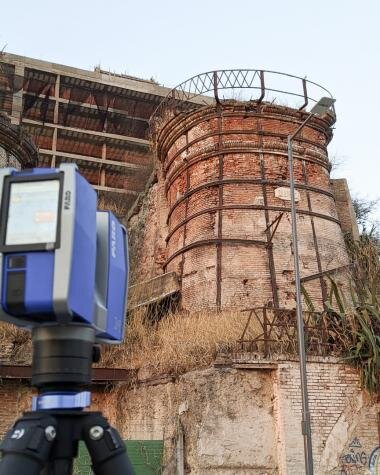Introducing Voyansi HBIM Services

You probably saw the news a year or so ago. Notre Dame going up in flames. When I got the notification on my phone, I felt it couldn’t be that bad: fires happen all the time, and in a large city with plenty of infrastructures, it would be easy for the fire department to put the blaze out. I guess there is a reason that I don’t play the lottery, I’m not very good at predicting the future. If you want to skip the wordplay of our blog today, feel free to check out our services page for our latest offering: HBIM Solutions.
As the tragedy of the day unfolded, I watched as many of my friends who had visited the site or studied it during university days mourn the loss of such an important cultural spot. It was a welcome site to see so many celebrities offer to donate to reconstruction efforts. However, Notre Dame is not the only site lost to tragedy, or in danger of degradation. I’ll put my science hat on for a moment, we live in an Oxygen rich environment with lots of H2O. If that means nothing to you, I’ll point to a common experience: have you ever left your bicycle out at night only to find a rusted chain in the morning? That may get you to begin to comprehend the volatility of our climate and why things degrade back to nature so quickly.
Back to our example of Notre Dame. After the initial shock of the fire wore off, I polled my colleagues on what they thought of the reconstruction pledges. One common element I heard centered around The ship of Theseus. If you are unfamiliar with this paradox, I’ll give you the cliff notes: If you have a ship that has had many voyages, over the ages things break and parts are replaced. When does the ship become another ship? Along these lines, I heard several common questions: Why is Notre Dame so special to warrant a rebuild? What about one of the other many historic sites we have lost to time? If it’s no longer the same church, does it really constitute the original structure, or just a really well-done reconstruction?
Often, environmental conditions preclude completely stabilizing or restoring a structure. Let’s also be honest for a minute. Some structures may be historically significant, but restoration efforts are expensive and without proper tourism feeding a site, it’s hard to find funding. Notre Dame as a structure in a very famous area along the European Tour Circuit personally touched so many people that there are many willing to fund the reconstruction. There are many other historically significant structures that may not have the funding available to invest such a sizeable amount for preservation purposes.
More commonly, and especially prevalent in Europe is the desire to preserve the look and feel of a neighborhood. What’s inside is no longer important or needed. Over the last 10 years of working as a nomad in sales, I’ve had the pleasure (or lack thereof sometimes) of staying in thousands of hotels worldwide. I always enjoy learning the former history of a building, especially when it’s obvious that it’s been repurposed. One of my favorite memories is looking back on a boat tour I took in Ghent. It was only then I realized that the facade of my hotel (The Ghent Marriott) had previously been the homes of merchants and traders that brought wealth to the area, in turn creating the need for the river tour I was then on.
When I started writing this blog, I realized that I could recall stays in the Hague, Brussels, Denver, New York, Madrid, Houston, and many more where it was obvious my stay had been in a building that formerly had been something else. But, even today, I don’t really know what, nor did the staff. Likewise, over the years I’ve visited many parks or other areas only to find a missing plaque or explanation that was difficult to find about the structures I could see around me.



